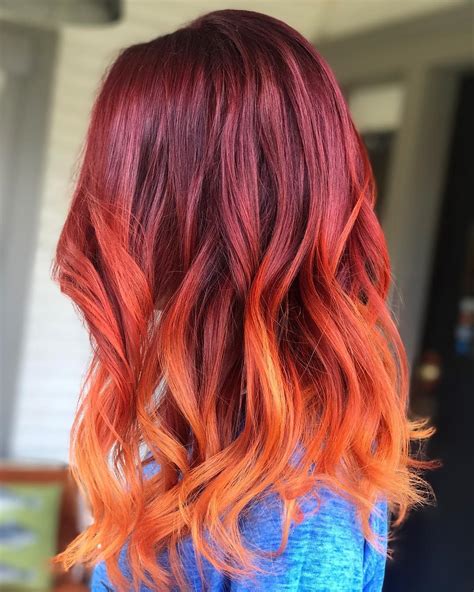Introduction

Embrace the captivating trend of hair ombre color, where the gradual transition between shades creates a stunning and dynamic look. This technique adds depth, dimension, and a touch of flair to any hair type and length. From subtle blends to dramatic contrasts, ombre hair color offers endless possibilities for self-expression.
Types of Ombre Hair Color
- Classic Ombre: A gradual transition from dark roots to lighter ends, creating a natural sun-kissed effect.
- Reverse Ombre: Lighter roots gradually transition to darker ends, giving an edgy and bold look.
- Balayage Ombre: A freehand painting technique that creates soft, blended transitions for a natural and effortless result.
- Highlight Ombre: Adds subtle highlights to an existing ombre base, creating additional dimension and contrast.
- Root Stretch Ombre: Blends the natural hair color with the ombre shades, minimizing the noticeable transition line.
Benefits of Ombre Hair Color
- Low Maintenance: Ombre color grows out gracefully, reducing the frequency of salon visits.
- Adds Volume and Texture: The contrast between shades creates the illusion of thicker, fuller hair.
- Enhances Facial Features: Strategically placed highlights can frame the face and enhance natural features.
- Versatile and Customizable: Ombre can be tailored to suit any hair type, length, and desired result.
Common Mistakes to Avoid
- Over-Processing: Avoid excessive bleaching, as it can damage hair and compromise its health.
- Uneven Blending: Ensure that the transition between shades is smooth and seamless.
- Not Conditioning: Regularly condition your hair to maintain its moisture and prevent breakage.
- Using Non-Professional Products: Invest in high-quality hair care products designed specifically for color-treated hair.
- Ignoring Root Maintenance: Touch up your roots regularly to keep the ombre effect vibrant.
Step-by-Step Approach to Ombre Hair Color
- Consultation: Discuss your desired look with a professional hairstylist to determine the best approach.
- Bleach Application: The hair is partially lightened to create the base for the ombre effect.
- Toning: The bleached hair is toned to achieve the desired lighter shades.
- Blending: The transition between shades is blended using a specific technique to create a smooth gradient.
- Styling: Finish with your preferred styling products to accentuate the ombre effect.
Pros and Cons of Ombre Hair Color
Pros:
– Adds depth, volume, and dimension to hair
– Enhances facial features and flatters all hair types
– Low maintenance and grows out gracefully
– Customizable to suit personal preferences
Cons:
– Requires bleaching, which can potentially damage hair
– Can be time-consuming and expensive to achieve
– May require regular touch-ups to maintain the effect
Hair Ombre Color Ideas
10 Subtle Ombre Ideas for a Natural Look:
- Honey Blonde to Platinum
- Dark Brown to Chestnut
- Black to Blue-Black
- Auburn to Copper
- Light Brown to Caramel
10 Bold Ombre Ideas for a Dramatic Effect:
- Bright Blue to Purple
- Pink to Orange
- Green to Teal
- Yellow to Neon Green
- Ombre Blonde with Vivid Extensions
10 Pastel Ombre Ideas for a Soft and Dreamy Look:
- Lilac to Lavender
- Rose Gold to Pink
- Peach to Apricot
- Mint to Baby Blue
- Rainbow Ombre with Pastel Shades
10 Reverse Ombre Ideas for an Edgy Transition:
- Icy Blonde to Dark Roots
- Ash Blonde to Platinum Roots
- Burgundy to Auburn Roots
- Blue to Black Roots
- Ombre with Rainbow Roots
Conclusion
Hair ombre color is a transformative technique that empowers individuals to express their creativity and enhance their hair with style and flair. Whether you prefer a subtle blend or a bold contrast, ombre offers endless possibilities to create a unique and captivating look that turns heads. Embrace the trend and let your hair shine with the beauty of ombre color.
